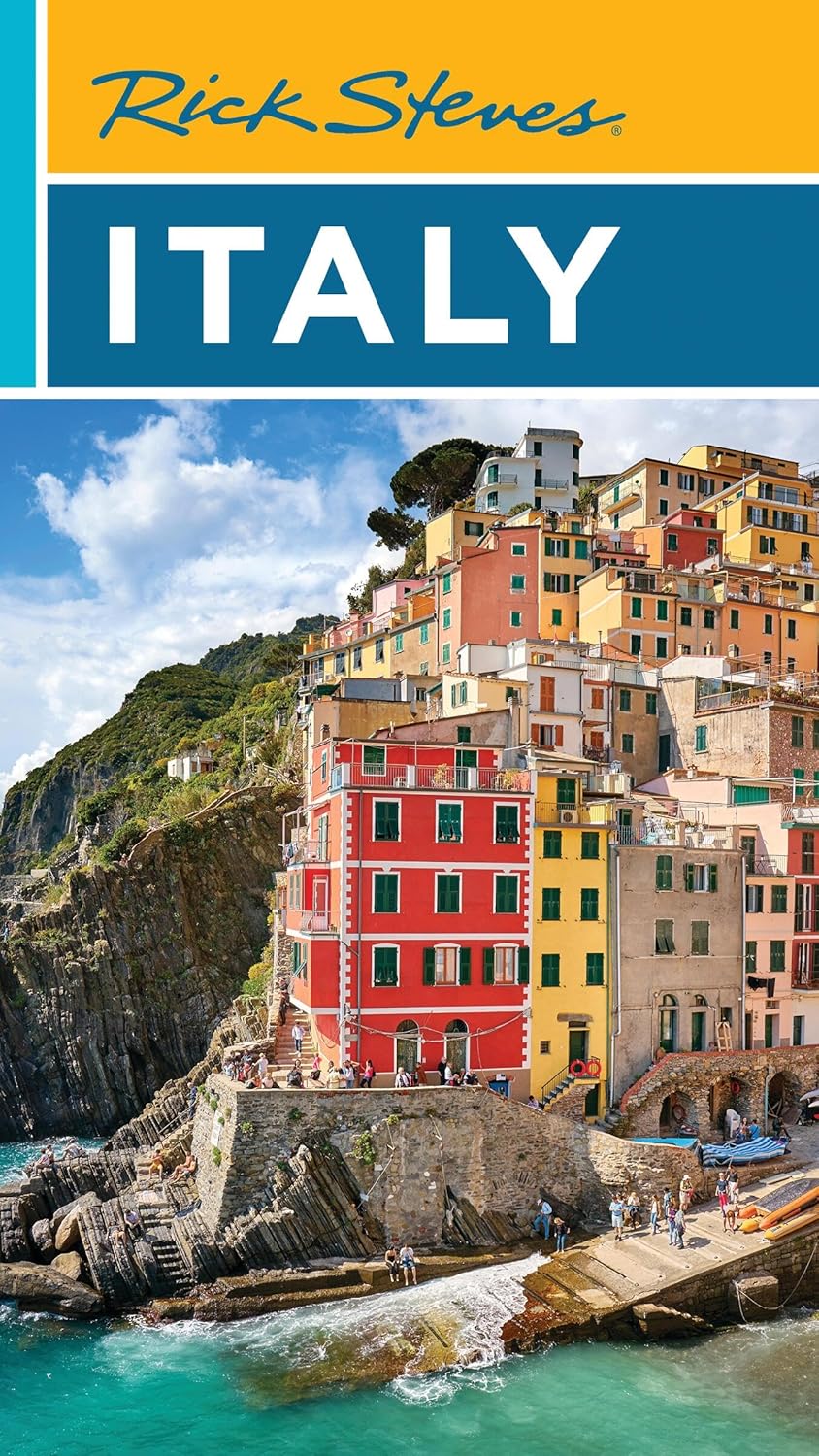What Are The Essential Things To See In Italy?
There are so many things to see in Italy, it's hard to know where to begin. Planning your visit to Italy can feel overwhelming – after all, this boot-shaped peninsula has been captivating travelers for centuries with its incredible art, stunning architecture, delicious cuisine, and rich history.
Whether you're dreaming of tossing a coin in Rome's Trevi Fountain, gliding over Venice's romantic canals, or savoring authentic pasta in a Tuscan hillside village, Italy offers experiences that will stay with you forever. The challenge isn't finding amazing things to see in Italy – it's choosing which ones to prioritize during your precious seven days.
What Are The Essential Things To See In Italy?
You want to maximize every moment of your Italian adventure. This guide focuses on the ten most essential places to visit in Italy, each offering unique experiences that showcase different facets of this remarkable country.
From the ancient wonders of Rome to the artistic treasures of Florence, from the romantic waterways of Venice to the dramatic coastlines of the Amalfi Coast, we'll help you create an itinerary that balances must-see landmarks with authentic local experiences.
Before we dive into specific destinations, let's talk strategy. Italy's excellent train system makes it possible to see multiple cities in a week, but resist the temptation to pack too much in.
The key to a memorable Italian vacation is allowing time to truly experience each place – to sit in a piazza with an espresso, to wander through neighborhoods without a map, and to discover those magical moments that happen when you're not rushing from one attraction to the next.
With that philosophy in mind, let's explore the top attractions in Italy that should be on every visitor's list.
What Are The Essential Things To See In Italy?
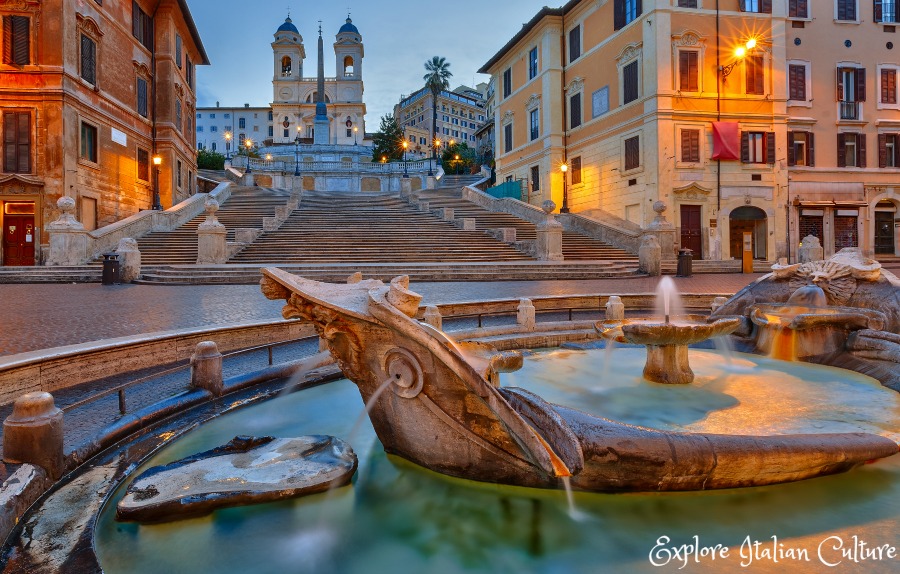 Barcaccia fountains in Rome
Barcaccia fountains in RomeRome: The Eternal City
Rome demands at least two full days of your Italian trip, and honestly, you could spend a lifetime here and still discover new wonders. Start with the iconic Colosseum, where gladiators once battled for their lives.
Book a skip-the-line tour that includes the underground chambers and upper tiers – it costs around €24-35 but saves hours of waiting and provides fascinating historical context. The best time to visit is early morning or late afternoon when the light creates dramatic shadows across the ancient stones.
Getting around Rome is straightforward with the metro system, though many attractions are walkable from each other in the historic center. For accommodation, consider staying near the Spanish Steps or in Trastevere for easy access to major sites.
The Hotel de Russie or Hotel Artemide offer luxury with prime locations, while boutique options like The First Roma Arte provide stylish comfort at more moderate prices.
Local tip: visit the Pantheon first thing in the morning when it opens at 9 AM. The crowds are minimal, and the morning light streaming through the oculus creates an almost spiritual atmosphere.
Entry is free, making it one of Rome's best-value attractions. Afterwards, grab a cornetto and cappuccino at Sant'Eustachio Il Caffè, a favorite among Romans since 1938. Remember, locals never drink cappuccino after 11 AM – it's considered a breakfast drink!
Don't miss the Vatican Museums and Sistine Chapel, but book well in advance. The standard entry fee is €20, but consider the early morning or evening tours (€40-60) for a more intimate experience with Michelangelo's masterpiece.
Pro tip: wear comfortable shoes and bring a small bottle of water – you'll be walking for hours on marble floors.
Read our dedicated page about things to do in Rome.
Things To See In Italy
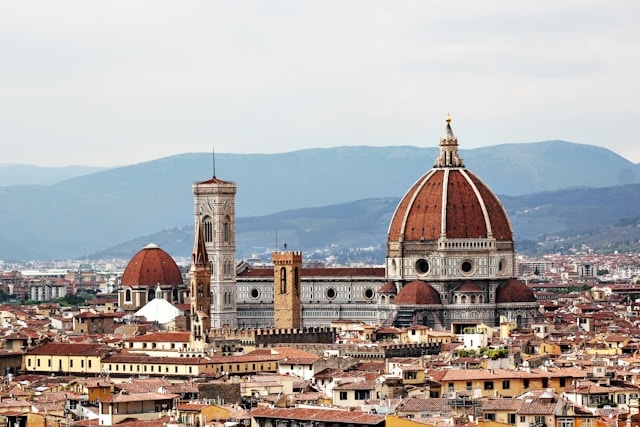 The Duomo in Florence
The Duomo in FlorenceFlorence (Firenze): Renaissance Jewel
Florence serves as the perfect second stop on your Italian journey, easily reached by high-speed train from Rome in just 1.5 hours (tickets from €29-45).
This compact city is an open-air museum where every street corner reveals Renaissance masterpieces. The Uffizi Gallery houses the world's finest collection of Renaissance art, including Botticelli's "Birth of Venus" and works by Leonardo da Vinci. Book timed entry tickets online for €20-25 to avoid disappointment.
For accommodation in Florence, the Hotel Davanzati offers boutique charm in the historic center, while the Four Seasons Hotel Firenze provides luxury in a Renaissance palace setting.
Budget-conscious travelers might consider the Plus Florence hostel, which offers both private rooms and shared accommodations with modern amenities.
Top tip for Florence: climb the Duomo's dome early in the morning for breathtaking city views without the crowds. The €30 ticket includes access to the cathedral, dome, bell tower, and museum – excellent value for money.
For an authentic Florentine meal, head to Trattoria Mario near the Central Market, where locals have been gathering since 1953. Don't expect English menus or tourist-friendly service – this is the real deal, with communal tables and traditional dishes like ribollita soup.
Visit the Oltrarno district across the river for artisan workshops where craftspeople still create leather goods, jewelry, and art using centuries-old techniques.
The Ponte Vecchio is beautiful but overpriced – instead, shop for gold jewelry on Via del Parione where Florentines actually buy their pieces.
Things to see in Italy
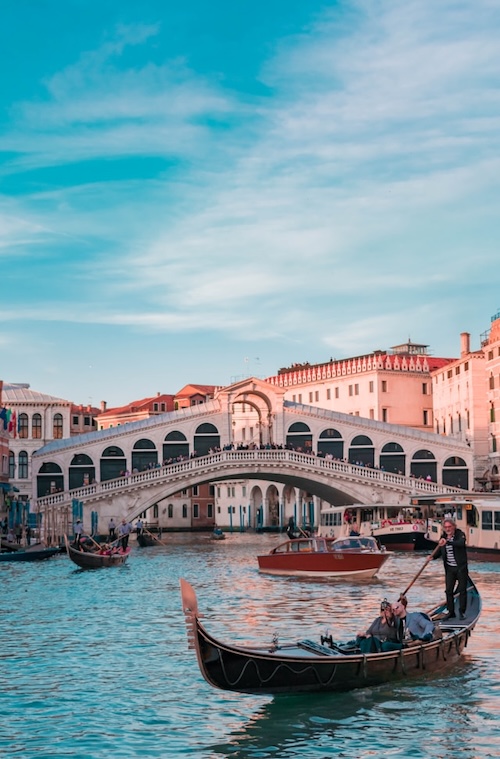 Venice
VeniceVenice: The Floating City
Venice represents one of the most unique places to visit in Italy, built entirely on water and unlike anywhere else on Earth. The train from Florence takes about 2 hours (€25-45), arriving at Santa Lucia station right on the Grand Canal. Your first water taxi or vaporetto ride will take your breath away as you glide past palazzos that have stood for centuries.
St. Mark's Square and Basilica are absolutely essential, but visit early morning or late evening to avoid crushing crowds. The basilica is free to enter, but the Pala d'Oro altarpiece (€5) and treasury (€3) are worth the additional cost. For the best views in Venice, skip the expensive Campanile and head to the Rialto Bridge at sunset – it's free and equally spectacular.
Accommodation in Venice requires careful consideration. The Gritti Palace offers unparalleled luxury on the Grand Canal, while Ca' Sagredo provides historic charm at more moderate prices.
For a truly Venetian experience, consider staying in a renovated palazzo apartment through local rental companies – you'll live like a local and often save money compared to hotels. We can also recommend a small apartment in a stunning location at La Rosa di Venezia.
Here's an insider secret: explore the Castello district, where real Venetians live and work. Visit the Arsenale area and the Biennale gardens for a glimpse of contemporary Venice beyond the tourist zones.
For the best cicchetti (Venetian tapas), locals recommend Cantina Do Spade, operating since 1415, or the more modern All'Arco near the Rialto Market.
Things to see in Italy
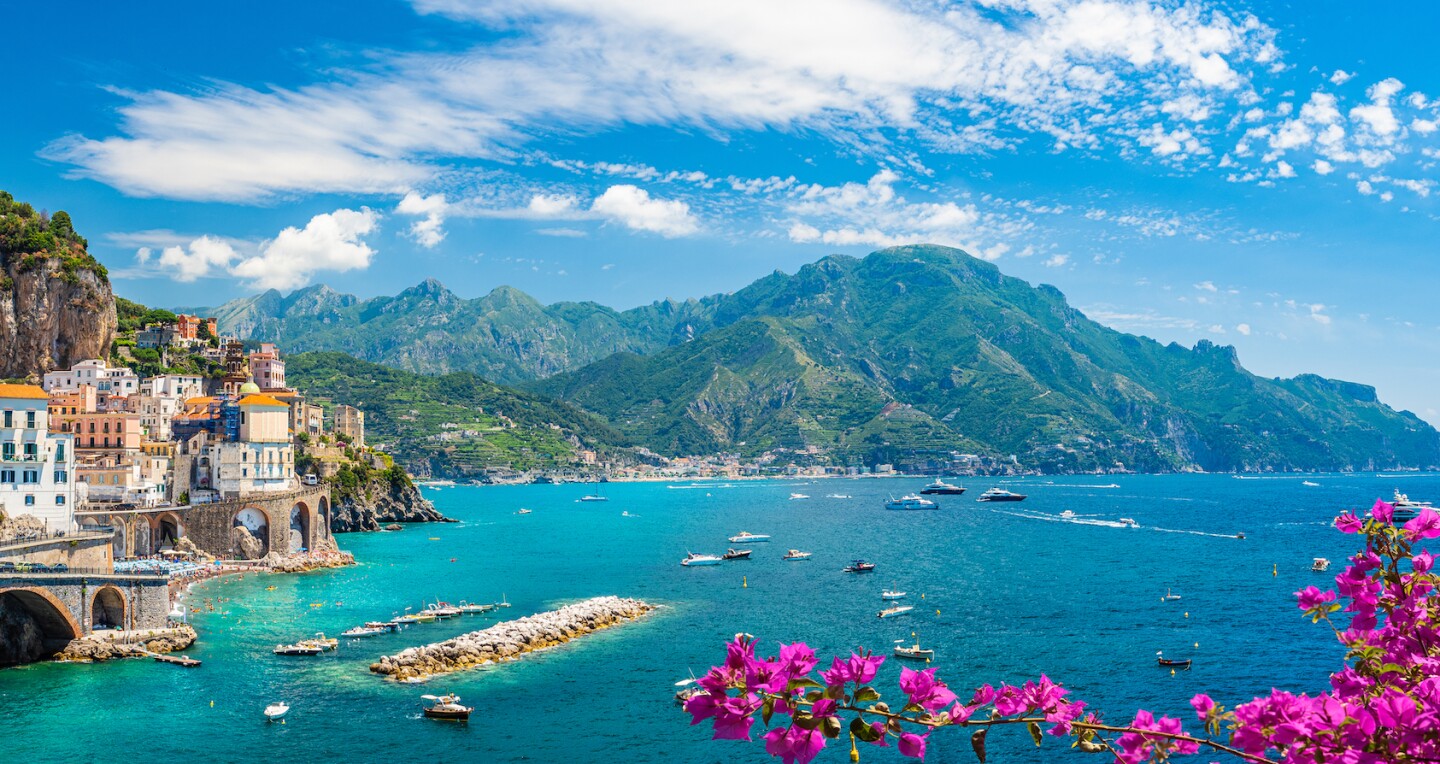 The Amalfi coast
The Amalfi coastThe Amalfi Coast: Mediterranean Paradise
The Amalfi Coast represents Italy's most dramatic coastal scenery, where lemon groves cling to cliffsides above the azure Mediterranean.
From Rome, take the high-speed train to Naples (1.5 hours, €45-65), then the Circumvesuviana train to Sorrento (1 hour, €4), followed by the SITA bus along the coastal road to Positano or Amalfi (1 hour, €2-4).
Positano offers the most Instagram-worthy views, with pastel-colored houses cascading down to a pebble beach. The town itself is the attraction – no major monuments or museums, just pure Mediterranean beauty.
Stay at Le Sirenuse for ultimate luxury or Villa Franca for boutique elegance with stunning views. Budget travelers can find charm at Pensione Maria Luisa, though book well ahead for summer visits.
Local tip: avoid driving the Amalfi Coast road unless you're very comfortable with narrow, winding mountain roads and aggressive Italian drivers. The SITA buses are reliable and driven by locals who know every curve. For the best limoncello, visit Salvatore Aceto's family shop in Amalfi – they've been making it for generations using lemons from their own groves.
Things to see in Italy
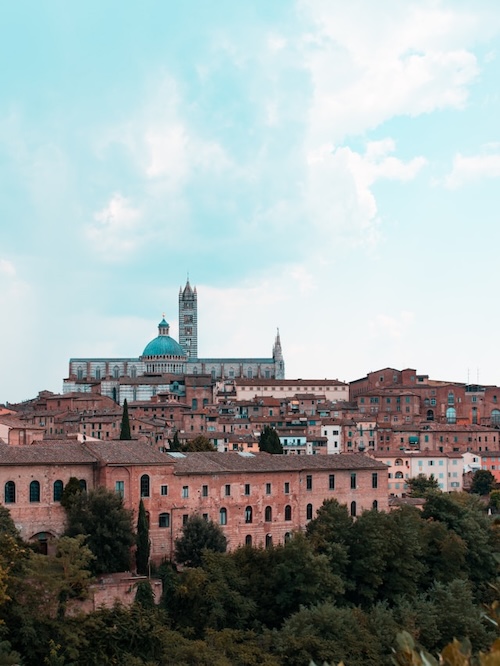 Siena, Italy
Siena, ItalyTuscany: Rolling Hills and Medieval Towns
No Italian adventure is complete without experiencing Tuscany's legendary countryside. Base yourself in Siena, easily reached by bus from Florence (1.5 hours, €8-15).
This medieval city offers everything you've imagined about Tuscany – the shell-shaped Piazza del Campo, the stunning cathedral with its striped marble facade, and winding streets that haven't changed in centuries.
The Palio horse race in July and August transforms Siena into a medieval spectacle, but even without this famous event, the city captivates visitors year-round. Climb the Torre del Mangia for panoramic views (€10), and visit the cathedral complex (€15 for the full pass including the library with its incredible frescoes).
For accommodation, the Grand Hotel Continental occupies a 17th-century palace in the heart of Siena, while Palazzo Ravizza offers boutique charm with garden views. From Siena, take day trips to San Gimignano (the "Medieval Manhattan" with its tower houses) and the Chianti wine region. Local buses connect these destinations, though renting a car gives you freedom to explore hidden villages and wineries.
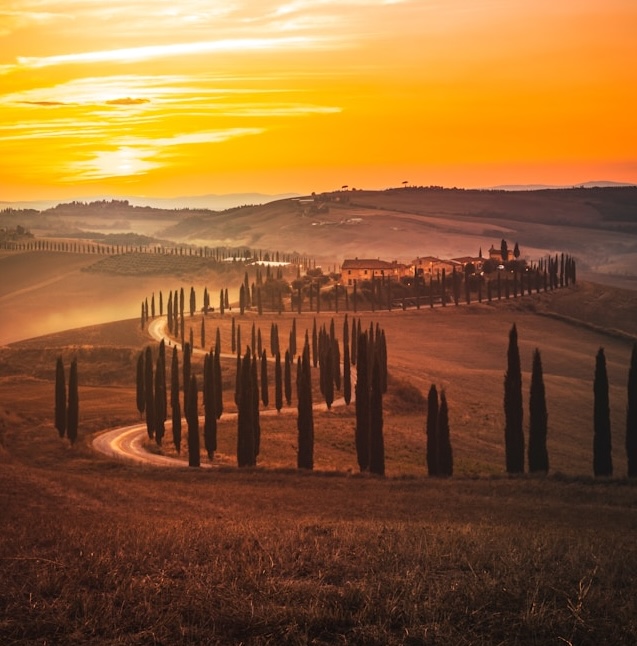 Tuscany at sunset
Tuscany at sunsetIf you have a hire car, consider a day trip to Montecatini Terme, a spa town, and also the village of Vinci, where Leonardo da Vinci came from. There's a small museum celebrating some of his inventions!
Here's what Tuscans know: the best wine tastings happen at small family estates, not the famous commercial wineries. Ask your hotel to arrange visits to places like Castello di Verrazzano or Vignamaggio, where you'll taste exceptional wines while learning about centuries-old traditions.
For authentic Tuscan cuisine, seek out restaurants that serve "cucina povera" – peasant dishes that transform simple ingredients into culinary magic.
Things to see in Italy
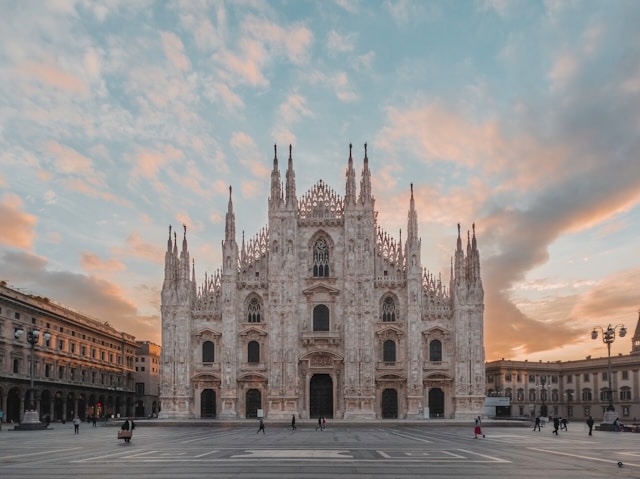 Duomo Milan exterior
Duomo Milan exteriorMilan: Fashion and Culture Capital
Milan might surprise you with its sophistication and energy. The high-speed train from Rome takes just 3 hours (€45-89), arriving at the magnificent Milano Centrale station.
The Gothic Duomo dominates the city center with its forest of spires and stunning facade. Climb to the roof terraces (€13-23 depending on elevator or stairs) for close-up views of the intricate stonework and city panoramas. Read our dedicated page on the Duomo in Milan.
La Scala opera house represents the pinnacle of musical culture – even if you can't attend a performance, the museum and theater tour (€9) provides fascinating insights into opera history.
The nearby Galleria Vittorio Emanuele II offers luxury shopping under a magnificent glass dome, while the Brera district provides art galleries, boutiques, and excellent restaurants.
For accommodation, the Bulgari Hotel Milano offers contemporary luxury, while the historic Grand Hotel et de Milan has hosted famous guests since 1863. The Navigli district provides nightlife and dining options that locals prefer over touristy areas near the Duomo.
Check our dedicated page on the top attractions in Milan!
Things to see in Italy
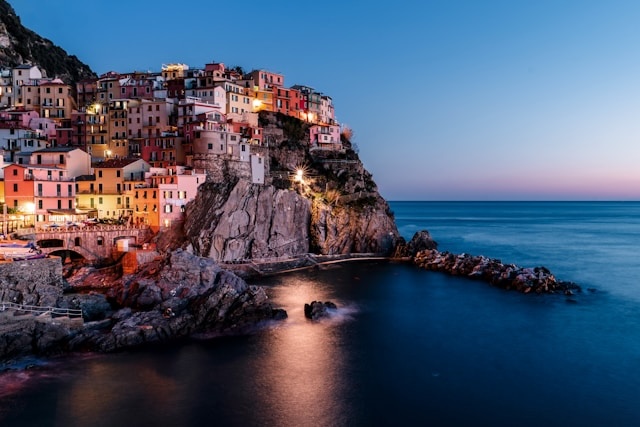 Cinque Terre at night
Cinque Terre at nightCinque Terre: Coastal Villages
These five fishing villages perched on the Ligurian coast represent some of Italy's most photogenic scenery. From Florence, take the train to La Spezia (2.5 hours, €25-35), then the local train that connects all five villages (day pass €16). Monterosso, Vernazza, Corniglia, Manarola, and Riomaggiore each offer unique charms and spectacular coastal views.
The hiking trails between villages provide unforgettable experiences, though some sections may be closed for maintenance. The easiest walk connects Monterosso to Vernazza (1.5 hours), while the most challenging climbs from Riomaggiore to Manarola. Local tip: start early to avoid crowds and heat, and wear proper hiking shoes – the trails can be steep and rocky.
Accommodation options are limited, so book well in advance. In Monterosso, Hotel Porto Roca offers sea views and comfort, while smaller guesthouses in each village provide authentic experiences. The local specialty, pesto, originated here – try it at Nessun Dorma in Manarola, where the restaurant's terrace offers stunning sunset views over the Mediterranean.
Things to see in Italy
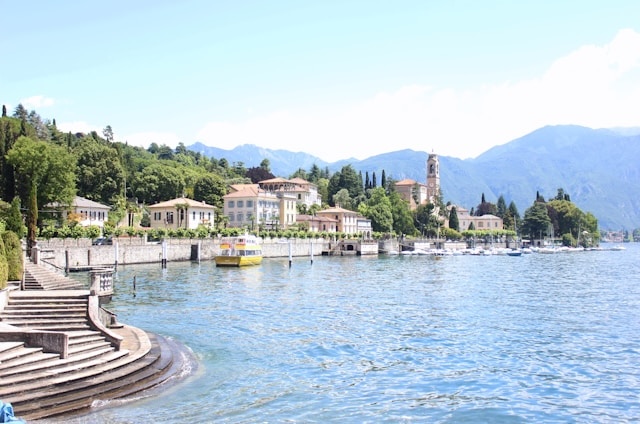
Lake Como: Alpine Elegance
Lake Como has attracted wealthy visitors for centuries with its combination of Alpine scenery, elegant villas, and sophisticated atmosphere.
From Milan, trains reach Como in 1 hour (€4-8), where you can catch ferries to lakeside towns like Bellagio, Varenna, and Menaggio. The ferry system (day pass €15-25) provides the most scenic transportation and connects all major destinations.
Villa del Balbianello and Villa Carlotta showcase the region's aristocratic heritage with their magnificent gardens and art collections (€10-20 entry). Bellagio, the "Pearl of the Lake," offers luxury shopping and dining with postcard-perfect views. Stay at the Grand Hotel Villa Serbelloni for ultimate elegance or Hotel Florence for boutique charm with lake views.
Local residents recommend taking the funicular from Como to Brunate for panoramic lake views without the crowds found at more famous viewpoints. For authentic regional cuisine, try risotto with perch, a local specialty, at Bilacus in Bellagio – locals have been dining here for generations.
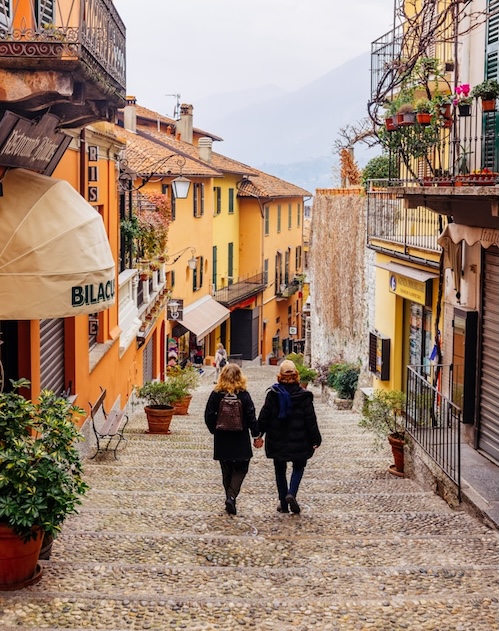 Bellagio, Italy
Bellagio, ItalyPlanning Your Perfect Week
With these incredible destinations at your fingertips, creating your ideal Italian itinerary becomes a delightful challenge. Consider starting in Rome for 2-3 days to absorb the ancient history and Vatican treasures, then taking the high-speed train to Florence for 2 days of Renaissance art and culture.
Venice deserves at least 1-2 days for its unique atmosphere, while the remaining time could be split between the Amalfi Coast's natural beauty and Tuscany's medieval charm. Remember that Italy rewards those who balance famous attractions with spontaneous discoveries – some of your best memories might come from that unexpected conversation with a local shopkeeper or stumbling upon a neighborhood festival.
The things to see in Italy extend far beyond any single itinerary, but these destinations provide an excellent foundation for understanding this country's incredible diversity.
Each location offers layers of history, culture, and beauty that reveal themselves gradually to thoughtful travelers. Book accommodations and major attractions in advance, especially during peak season, but leave room for serendipity in your schedule.
Italy's greatest gift to visitors isn't just its monuments and museums – it's the Italian approach to life that celebrates beauty, family, food, and the simple pleasure of living well.
Take time to sit in piazzas, linger over meals, and engage with locals who are often eager to share their passion for their homeland. Your week in Italy will end too quickly, but the memories and inspiration will last a lifetime.



